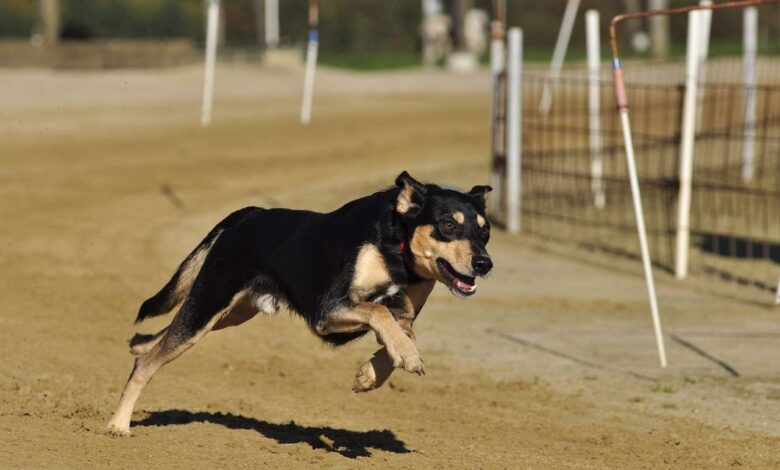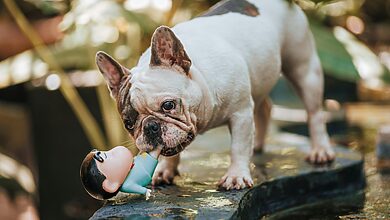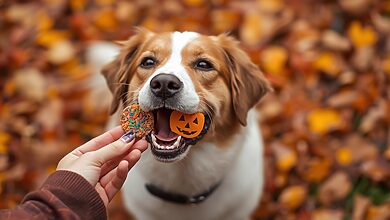Full Speed Ahead: The Excitement of Dog Racing

Dog racing is a sport that has long been celebrated for its blend of speed, skill, and suspense. Originating in the early 20th century, this fast-paced competition has evolved into a multi-million dollar industry, captivating audiences around the globe. Yet, dog racing is not without its controversies, as issues concerning the welfare of the racing dogs and the ethics of the sport have sparked heated debates. This comprehensive exploration of dog racing will cover its history, the intricacies of how it works, the lives of the racing greyhounds, the ethics surrounding the sport, its economic impact, and the future of dog racing. We’ll also delve into some of the most famous dog racers and tracks, offering a well-rounded view of this exhilarating yet complex sport.
Table of contents
The History of Dog Racing
The Origins of Dog Racing
Dog racing traces its roots back to the early 20th century in the United States and the United Kingdom. The sport began as a natural extension of the ancient practice of coursing, where dogs chased live game in the open fields. Greyhounds, known for their speed and agility, were the breed of choice for these events.
The transition from coursing to organized racing came with the invention of the mechanical lure by Owen Patrick Smith in 1912. This innovation allowed dogs to chase a lure around an enclosed track, eliminating the need for live game and making the sport more spectator-friendly. The first official greyhound race with a mechanical lure took place in 1919 in Emeryville, California. This event marked the beginning of modern dog racing, paving the way for its development into a structured sport.
The Evolution and Global Spread
Following its inception, dog racing rapidly gained popularity in the United States, spreading to other countries such as the United Kingdom, Ireland, Australia, and New Zealand. By the 1920s and 1930s, the sport had become a popular pastime, attracting large crowds to race tracks. Betting on races also became a significant aspect of the sport, contributing to its widespread appeal.
In the United Kingdom, dog racing became a mainstream sport with the opening of Belle Vue Stadium in Manchester in 1926. The sport flourished in the post-war era, with hundreds of tracks operating across the country. Similarly, in the United States, greyhound racing reached its peak during the mid-20th century, with tracks operating in many states.
Key Milestones in Dog Racing History
- 1912: Invention of the mechanical lure by Owen Patrick Smith.
- 1919: The first official greyhound race takes place in Emeryville, California.
- 1926: Belle Vue Stadium opens in Manchester, marking the beginning of organized dog racing in the UK.
- 1931: Legalization of pari-mutuel betting in Florida, boosting the popularity of greyhound racing in the state.
- 1970s-1980s: The peak of greyhound racing’s popularity, with numerous tracks operating worldwide.
External Resources
- Greyhound Racing History – American Kennel Club
- The Story of Greyhound Racing – The Greyhound Board of Great Britain
- The Evolution of Dog Racing – National Greyhound Association
How Dog Racing Works
Understanding the Basics
Dog racing is a sport where greyhounds compete against each other on a track, chasing a mechanical lure. The race typically involves six to eight dogs, and the first one to cross the finish line is declared the winner. The excitement of dog racing lies in the speed and agility of the greyhounds, which can reach speeds of up to 45 miles per hour.
Races are usually run over distances ranging from 250 to 750 yards, with the most common distance being 500 yards. The races are conducted on oval tracks made of sand or dirt, designed to provide a safe and fast surface for the dogs.
The Breeds Involved in Racing
While greyhounds are the most common breed associated with dog racing, other breeds such as whippets and Italian greyhounds are also involved in racing. Greyhounds, however, are the most popular due to their incredible speed, agility, and competitive nature.
Greyhounds are bred specifically for racing, with selective breeding practices aimed at enhancing their speed, stamina, and racing instincts. The dogs undergo rigorous training and conditioning to prepare them for the demands of the sport.
The Racing Tracks and Formats
Dog racing tracks are designed to provide a safe and controlled environment for the races. The tracks are oval in shape, with a circumference ranging from 400 to 500 yards. The surface is typically made of sand or dirt, which is regularly maintained to ensure the safety of the dogs.
Races are conducted in various formats, including sprint races, middle-distance races, and marathon races. The most common format is the sprint race, which covers a distance of 500 yards. Middle-distance races range from 500 to 700 yards, while marathon races cover distances of 700 yards or more.
External Resources
- How Dog Racing Works – National Greyhound Association
- Greyhound Racing Explained – The Greyhound Board of Great Britain
- The Anatomy of a Greyhound Race – Greyhound Racing New Zealand
The Lives of Racing Greyhounds
Training and Care
The life of a racing greyhound begins with specialized training from a young age. Puppies are introduced to racing through playful activities that mimic the chase, gradually building their speed and agility. As they grow, their training becomes more structured, with regular running sessions, strength training, and conditioning exercises.
Greyhounds are typically trained by professional trainers who are responsible for their overall care. These trainers ensure that the dogs receive proper nutrition, medical care, and rest. The well-being of the greyhounds is crucial for their performance on the track, so trainers invest significant time and effort into their care.
Life on the Track
Once a greyhound is ready for racing, its life revolves around the track. Racing greyhounds typically compete in several races each month, depending on their health and performance. The dogs are housed in kennels near the track, where they are cared for by their trainers and handlers.
A typical day for a racing greyhound includes exercise, grooming, and rest. The dogs are fed a high-protein diet to maintain their energy levels and are regularly checked by veterinarians to ensure they are in peak condition.
Retirement and Adoption
The racing career of a greyhound usually lasts until the dog is about 3 to 5 years old. After retiring from racing, many greyhounds are adopted into loving homes through various greyhound adoption programs. These programs work to find homes for retired racing greyhounds, where they can live out the rest of their lives as pets.
Retired greyhounds are known for their gentle and calm demeanor, making them excellent companions. Adoption programs provide resources and support to help new owners transition their greyhounds from the track to home life.
External Resources
- Greyhound Adoption – Greyhound Adoption League of America
- Life After Racing – Retired Greyhounds as Pets
- Caring for Your Racing Greyhound – National Greyhound Association
The Ethics of Dog Racing
Animal Welfare Concerns
One of the most significant ethical concerns surrounding dog racing is the welfare of the greyhounds. Critics argue that the sport places undue physical and mental stress on the dogs, leading to injuries and health issues. Additionally, concerns have been raised about the treatment of greyhounds after their racing careers end, with some dogs reportedly being neglected or euthanized if they cannot be rehomed.
The living conditions of racing greyhounds have also been a point of contention. Some animal welfare groups have criticized the use of kennels and the limited social interaction that racing greyhounds experience. These concerns have led to calls for stricter regulations and oversight to ensure the well-being of the dogs.
Regulatory Measures and Reforms
In response to these concerns, many countries and states have implemented regulations to protect the welfare of racing greyhounds. These regulations often include standards for housing, feeding, and medical care, as well as restrictions on the number of races a dog can participate in.
In the United States, the Greyhound Racing Association of America (GRAA) and the National Greyhound Association (NGA) have established guidelines for the ethical treatment of racing greyhounds. Similarly, in the United Kingdom, the Greyhound Board of Great Britain (GBGB) oversees the welfare of racing greyhounds, implementing strict regulations and conducting regular inspections of tracks and kennels.
Public Perception and Advocacy
Public perception of dog racing has shifted significantly in recent years, with growing awareness of the welfare issues associated with the sport. Advocacy groups such as GREY2K USA Worldwide have been at the forefront of efforts to ban or reform dog racing, highlighting cases of mistreatment and pushing for stricter regulations.
As a result of these advocacy efforts, several countries and states have banned greyhound racing altogether. For example, greyhound racing has been banned in 41 U.S. states, including Florida, which was once a hub for the sport.
External Resources
- Animal Welfare in Greyhound Racing – American Society for the Prevention of Cruelty to Animals (ASPCA)
- Greyhound Welfare – The Humane Society of the United States
- Greyhound Racing and Animal Welfare – GREY2K USA Worldwide
The Economic Impact of Dog Racing
The Industry’s Financial Footprint
Dog racing is a multi-million dollar industry that generates significant revenue through betting, sponsorships, and events. In countries where the sport is still popular, such as Australia, Ireland, and the United Kingdom, dog racing contributes to the local economy by attracting tourists and generating employment opportunities.
Betting on dog races is a significant source of revenue for the industry. In many countries, pari-mutuel betting is the standard, where the total amount bet on a race is pooled, and winnings are distributed based on the number of correct bets. This system ensures that the industry continues to thrive, even in the face of declining attendance at tracks.
Employment and Revenue Generation
The dog racing industry provides employment for thousands of people, including trainers, handlers, veterinarians, track operators, and betting shop employees. The sport also supports ancillary businesses such as pet supply stores, veterinary clinics, and media outlets that cover the races.
In addition to direct employment, dog racing generates revenue for local governments through taxes on betting and track operations. This revenue can be used to fund public services and infrastructure projects, contributing to the overall economic health of the community.
Economic Challenges and Opportunities
Despite its economic contributions, the dog racing industry faces significant challenges. The rise of alternative forms of entertainment, such as online gaming and other sports, has led to a decline in attendance at dog racing tracks. Additionally, growing concerns about animal welfare have resulted in stricter regulations and the closure of many tracks.
However, there are opportunities for the industry to adapt and thrive in the future. Some tracks have diversified their offerings by hosting other events, such as concerts and car shows, to attract new audiences. Additionally, the adoption of new technologies, such as virtual racing, has the potential to engage younger fans and revitalize interest in the sport.
External Resources
- The Economic Impact of Greyhound Racing – American Gaming Association
- Employment in the Greyhound Racing Industry – Greyhound Racing New Zealand
- Challenges and Opportunities in Dog Racing – International Greyhound Racing Federation
The Future of Dog Racing
Trends and Innovations
The future of dog racing is uncertain, with the sport facing both challenges and opportunities. One of the most significant trends in recent years has been the decline in the number of active tracks, particularly in the United States and the United Kingdom. This decline is largely due to increasing concerns about animal welfare and competition from other forms of entertainment.
However, the sport is evolving in response to these challenges. Some tracks have embraced new technologies, such as virtual racing and live streaming, to attract a broader audience. Additionally, there is a growing interest in non-racing events, such as lure coursing and agility competitions, which offer a more humane alternative to traditional racing.
Legal and Regulatory Changes
The legal landscape for dog racing is also changing, with many countries and states imposing stricter regulations or banning the sport altogether. In the United States, the closure of tracks in states like Florida has had a significant impact on the industry, leading to discussions about the future viability of greyhound racing.
In countries where dog racing is still legal, there is a push for greater transparency and accountability. Regulatory bodies are working to ensure that the welfare of the dogs is a top priority, with regular inspections and stricter enforcement of existing laws.
The Role of Advocacy Groups
Advocacy groups continue to play a crucial role in shaping the future of dog racing. Organizations like GREY2K USA Worldwide and The Humane Society of the United States are campaigning for the closure of remaining tracks and promoting alternatives to racing.
These groups are also advocating for the adoption and rehabilitation of retired racing greyhounds, ensuring that these dogs can live out their lives in loving homes. The growing popularity of greyhound adoption programs is a testament to the success of these advocacy efforts.
External Resources
- The Future of Greyhound Racing – GREY2K USA Worldwide
- Legal and Regulatory Changes in Dog Racing – The Greyhound Board of Great Britain
- Advocacy and the Future of Dog Racing – The Humane Society of the United States
Famous Dog Racers and Tracks
Greyhound Racing Halls of Fame
To honor the sport’s most successful dogs, trainers, and contributors, various Greyhound Racing Halls of Fame have been established in different countries. In the United States, the National Greyhound Association’s Hall of Fame in Abilene, Kansas, pays tribute to greyhounds like P’s Rambling, who won an unprecedented 80 races in his career, and to individuals who made significant contributions to the sport. Similarly, in the United Kingdom, the Greyhound Board of Great Britain honors exceptional dogs and personalities in its own Hall of Fame.
These halls serve as repositories of the sport’s history, celebrating the achievements of greyhounds whose performances on the track left a lasting impact on fans and the racing community alike.
International Impact and Global Tracks
Greyhound racing has left its mark in many countries, each with its own set of iconic tracks and famous racers. Australia’s Wentworth Park is one of the premier venues for greyhound racing, hosting major events like the Golden Easter Egg, one of the richest greyhound races in the world. In Ireland, Shelbourne Park in Dublin remains the epicenter of the sport, with the Irish Greyhound Derby attracting top racers from around the globe.
New Zealand also boasts a strong greyhound racing culture, with Addington Raceway in Christchurch being one of the most notable tracks. The New Zealand Cup, held annually at Addington, is a prestigious event in the country’s racing calendar.
In these countries, greyhound racing is deeply woven into the cultural fabric, and the sport continues to thrive due to its rich history and the passion of its fans.
The Dual Nature of Dog Racing’s Future
Dog racing is a sport steeped in history, excitement, and controversy. It has thrilled fans with its high-speed chases and competitive spirit, while also drawing scrutiny for the ethical concerns it raises. The future of dog racing lies in navigating this dual nature—preserving the sport’s heritage and excitement while addressing the welfare concerns that have led to its decline in several regions.
With technological advancements and shifts in public opinion, the sport is at a crossroads. The way forward will depend on how well the industry adapts to new realities, embraces reforms, and finds innovative ways to engage audiences. Whether dog racing will continue to be a major sport or become a historical curiosity remains to be seen, but its legacy will undoubtedly be remembered.
Frequently Asked Questions (FAQ) About Dog Racing
1. What is dog racing, and how does it work?
Dog racing is a competitive sport where greyhounds, or sometimes other breeds, race around a track in pursuit of an artificial lure. The objective is for the dogs to complete the circuit as quickly as possible, with the first dog to cross the finish line declared the winner. The races are typically short, ranging from 300 to 550 meters (328 to 601 yards). Spectators can place bets on the outcome, adding a gambling element to the sport.
The races are conducted on an oval track, usually made of sand or dirt. Before the race begins, the dogs are placed in starting boxes that open simultaneously when the lure is set in motion. The lure, usually a mechanical rabbit, travels ahead of the dogs, prompting them to chase it around the track. Each race is supervised by officials to ensure fairness, and the results are recorded and displayed for the audience.
2. What is the history of dog racing?
Dog racing has its roots in ancient hunting practices where dogs were bred for their speed and agility. However, modern greyhound racing as a sport began in the early 20th century. The first official greyhound race took place in England in 1926 at Belle Vue Stadium in Manchester, marking the start of organized racing events.
The sport quickly spread to other countries, particularly in the United States, where it became popular during the mid-20th century. By the 1930s, greyhound racing was a major entertainment industry, with tracks in several states drawing large crowds. Betting on races became a significant aspect of the sport, contributing to its popularity.
Over the years, dog racing has faced various challenges, including concerns about animal welfare and competition from other forms of entertainment. Despite these issues, the sport continues to have a dedicated following in certain regions.
3. What breeds are commonly used in dog racing?
The most common breed used in dog racing is the greyhound, known for its incredible speed and athleticism. Greyhounds are naturally slender and muscular, with a deep chest and long legs, allowing them to reach speeds of up to 45 miles per hour (72 kilometers per hour). Their unique physique and temperament make them ideal for racing.
In some regions, other breeds like whippets and lurchers may also participate in racing events, particularly in informal or amateur races. However, greyhounds remain the predominant breed in professional racing due to their unmatched speed and agility.
4. What happens to greyhounds after their racing careers end?
Once a greyhound’s racing career ends, typically between the ages of 3 and 5 years old, they are often retired from the sport. In the past, retired greyhounds faced uncertain futures, with some being euthanized or abandoned. However, in recent years, there has been a significant push to find loving homes for these dogs through adoption programs.
Organizations such as the Greyhound Adoption League of America (GALA) and Retired Greyhounds as Pets (RGAP) work tirelessly to place retired racing greyhounds in homes where they can live out the rest of their lives as pets. These dogs are known for being gentle, affectionate, and low-maintenance, making them excellent companions.
The process of adopting a retired greyhound typically involves a thorough screening to ensure the dog and potential owner are a good match. Once adopted, greyhounds often adapt quickly to life as a pet, enjoying regular walks, a comfortable bed, and the love of a family.
5. What are the ethical concerns surrounding dog racing?
The ethics of dog racing have been a major point of contention, particularly regarding the treatment and welfare of the racing dogs. Critics argue that the sport can lead to the exploitation and mistreatment of greyhounds, with concerns about their living conditions, injuries sustained during races, and what happens to them after their racing careers end.
Injuries are a significant concern, as greyhounds can suffer from broken bones, sprains, and other health issues due to the high speeds and physical demands of racing. Additionally, some racing operations have been accused of keeping dogs in substandard conditions, with inadequate housing, nutrition, and medical care.
As a result, there have been increasing calls for stricter regulations to ensure the welfare of racing greyhounds. Advocacy groups like GREY2K USA Worldwide and the Humane Society have campaigned for the reform or abolition of greyhound racing, leading to bans on the sport in several regions.
6. How does dog racing impact the economy?
Dog racing has a significant economic impact, particularly in regions where the sport is popular. The industry generates revenue through betting, sponsorships, and events, contributing to local economies by attracting tourists and providing employment opportunities.
Betting on dog races is a major source of income for the industry, with pari-mutuel betting being the most common form. This system pools all bets and distributes winnings based on the number of correct wagers, ensuring that the industry remains financially viable even with fluctuating attendance.
The sport also provides jobs for a wide range of people, including trainers, handlers, veterinarians, track operators, and betting shop employees. Additionally, dog racing supports related industries, such as pet supply stores, veterinary clinics, and media outlets that cover the sport.
However, the industry has faced economic challenges in recent years, including declining attendance at tracks and growing competition from other forms of entertainment. Some tracks have responded by diversifying their offerings, such as hosting concerts or other events, to attract new audiences.
7. What are the legal regulations governing dog racing?
Legal regulations governing dog racing vary by country and region. In the United States, greyhound racing is legal in only a few states, with many having banned the sport due to concerns about animal welfare. States that still allow dog racing have implemented strict regulations to ensure the welfare of the dogs, including guidelines for housing, feeding, and medical care.
In the United Kingdom, the Greyhound Board of Great Britain (GBGB) oversees the sport, enforcing regulations that cover everything from the construction of tracks to the treatment of the dogs. Regular inspections are conducted to ensure compliance with these regulations.
Australia and Ireland also have regulatory bodies that oversee greyhound racing, with similar standards in place to protect the welfare of the dogs. These regulations are designed to address the ethical concerns associated with the sport while allowing it to continue in a controlled and monitored environment.
Despite these regulations, the legal status of dog racing continues to evolve, with ongoing debates about whether the sport should be banned or further regulated.
8. What is the future of dog racing?
The future of dog racing is uncertain, with the sport facing both significant challenges and potential opportunities. The number of active tracks has been declining, particularly in the United States and the United Kingdom, due to increasing concerns about animal welfare and competition from other forms of entertainment.
However, the industry is also exploring ways to adapt and survive. Some tracks have embraced new technologies, such as virtual racing and live streaming, to attract a broader audience. There is also a growing interest in non-racing events, such as lure coursing and agility competitions, which offer a more humane alternative to traditional racing.
Legal and regulatory changes are likely to continue shaping the future of the sport, with increasing pressure from advocacy groups pushing for stricter regulations or outright bans. The adoption of retired greyhounds as pets is also expected to grow, providing a positive outlet for dogs once their racing careers are over.
Ultimately, the future of dog racing will depend on how well the industry can address these challenges and adapt to changing public perceptions.
9. Who are some of the most famous dogs and tracks in dog racing history?
Dog racing has seen many legendary greyhounds and iconic tracks that have left an indelible mark on the sport. Mick the Miller, an Irish greyhound, is one of the most famous racers of all time, having won the English Greyhound Derby in 1929 and 1930. His success on the track earned him widespread fame, and he is often regarded as the greatest greyhound of all time.
Ballyregan Bob, another legendary greyhound, set a world record by winning 32 consecutive races between 1985 and 1986. His incredible winning streak solidified his place in dog racing history.
As for tracks, White City Stadium in London was once the premier venue for greyhound racing in the UK, hosting the English Greyhound Derby for many years. In the United States, the Daytona Beach Kennel Club in Florida was known for hosting the Daytona 550 race. Although some of these tracks no longer exist, their legacy continues to influence the sport.
Other notable tracks include Shelbourne Park in Dublin, Ireland, and Wentworth Park in Sydney, Australia, both of which continue to host major greyhound racing events.
10. How can I get involved in dog racing or adopt a retired racing greyhound?
If you’re interested in getting involved in dog racing, there are several ways to do so. You can start by attending races at a local track, where you can learn more about the sport and even place bets. For those interested in working within the industry, opportunities are available in various roles, including training, handling, and track operations.
If you’re passionate about animal welfare and want to help retired racing greyhounds, adopting one of these dogs can be a rewarding experience. Many organizations specialize in finding homes for retired greyhounds, such as the Greyhound Adoption League of America (GALA) and Retired Greyhounds as Pets (RGAP).
Adopting a retired greyhound typically involves a screening process to ensure that the dog and the prospective owner are a good match. Once adopted, greyhounds usually adapt well to life as a pet, becoming loyal and loving companions.
For more information on adoption, you can visit the websites of organizations dedicated to greyhound welfare and adoption:
- Retired Greyhounds as Pets (RGAP)
- Greyhound Welfare – GREY2K USA Worldwide
By getting involved in dog racing or adopting a retired greyhound, you can contribute to the ongoing conversation about the sport and help shape its future.







